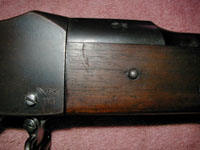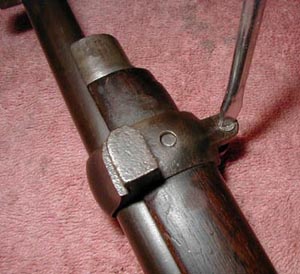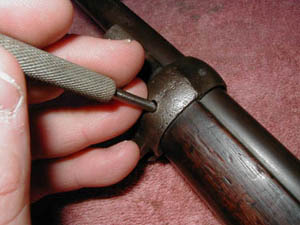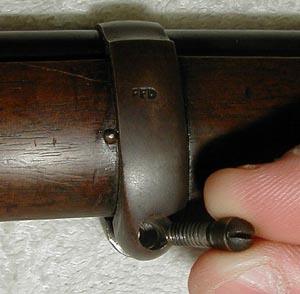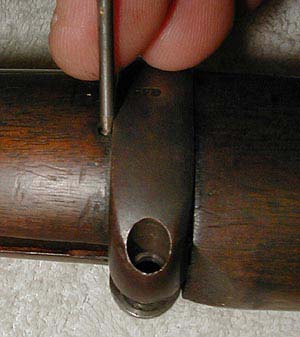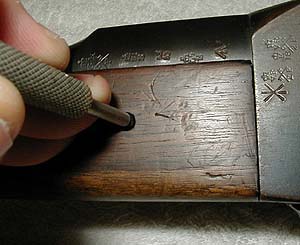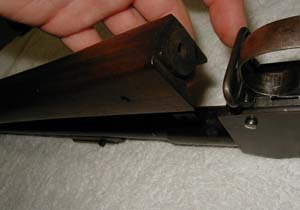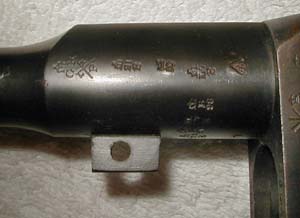|
|||
|
Forend removal will allow for cleaning of an often neglected portion of the weapon, and will allow you to view many hidden proofs, stamps and markings (most important of these, the weapon's serial number). There are two variations in attaching the rear portion of the forend to Military Martinis. Both methods utilize barrel bands which are held in place by pins and screws (one barrel band on some carbines). On Mark I and II Infantry Rifles, and the Artillery Carbine Mark II, a pin is driven through the rear portion of the forend wood. This pin passes through a block of metal attached to the bottom of the barrel which keeps the forend and barrel securely attached to one another. Since metal is a good conductor of heat, it was found that heat from prolonged firing would transfer from the barrel, through this block and into the pin. Some complained that touching the ends of the pin, which protruded from the sides of the forend, would cause burns. In fact, many soldiers would wrap rags, dampened cowhide, or leather around this area of the rifle to prevent this. This problem was addressed temporarily in some units by issuing a leather cover which was wrapped around the rear forend, and held in place by leather laces. Eventually, the problem was permanently solved by dropping the pin and block method in favor of a hooked plate arrangement. This improved method utilized a small, hooked metal plate mounted at the rear bottom of the forend. This plate was attached to the underside of the forend by two wood screws. The hooked end would lock into a channel milled out of the front of the action body to secure the rear of the forend to the rifle. This method eliminated the heat transfer problem, and was used in the Mark III Infantry Rifle and later, and all Carbines except the Artillery Carbine Mark II (which was essentially a shortened Mark II Infantry Rifle). |
|
Pin And Block Type Forends (Mark I and II Rifle, Mark II Carbine) |
|
Hook and Plate Type Forends (Mark III and later Rifle and most Carbines) |
